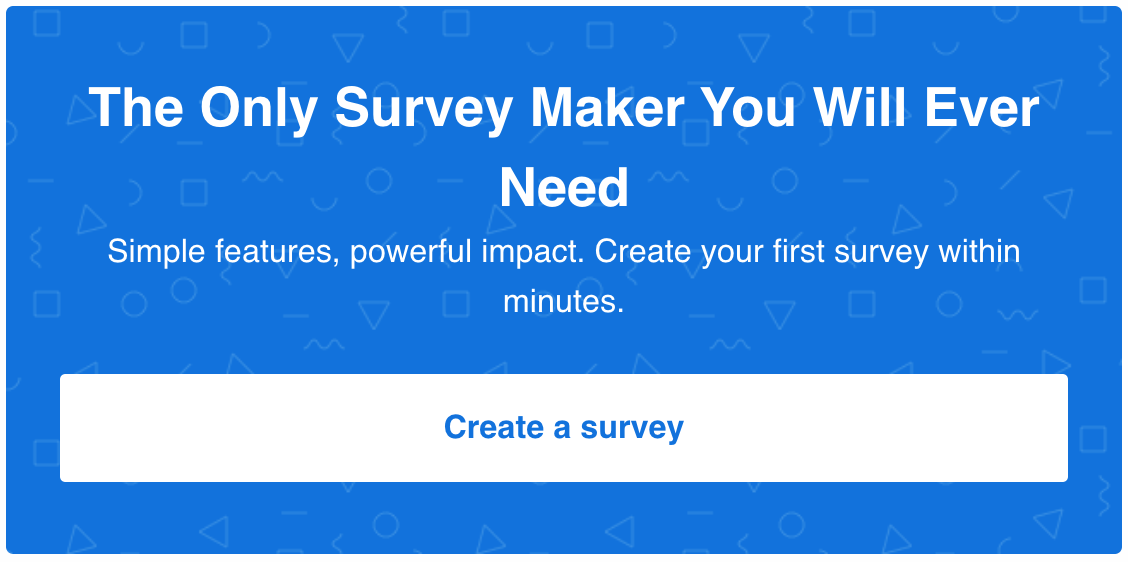If you plan to move your business beyond the start-up phase, soon enough retention rate will become one of those things that will occupy your daily thoughts. Despite its importance, retention rate and the numbers behind it are still a source of quite a few dilemmas among marketers and business owners.
How high should my retention rate be? What are reasonable expectations? How do I improve my retention rate? You’ll get all the answers to these questions in this article.
What is retention rate?
Let’s start with the basics. Retention rate is the number of customers your business currently has under contract (weekly, monthly, annual) and the percentage retained when the contract period ends.
As you can see, the retention rate is the number used in contract or subscription-based businesses and services. It should not be confused with mere customer counts, for, let’s say, a retail store. In general, retention rate tends to refer to the same group of people, while growth or drops in customer count are usually tied to specific periods determined by each business.
How to calculate the retention rate
Calculating retention rate is pretty simple if you use this formula:
Retention Rate = ((CE-CN)/CS)) X 100
- CE – the number of customers at the end of a certain period (week, month, year)
- CN – the number of new customers acquired during this period
- CS – the number of customers at the start of this period
Don’t worry, it is not complicated at all. The calculation goes like this. You start the month with 100 customers. Over the course of the month, you lose 10 customers, but you acquire 20 new customers, ending the month with 110 customers. So, if we use this formula, it goes like this:
- Step 1: 110-20=90
- Step 2: 90/100=0.9
- Step 3: 0.9×100=90
The final number is your retention rate – 90%.
What is a good retention rate?
Now here comes the tricky part. Business beginners often feel unsure about the numbers they see on the spreadsheet at the end of the month. Is this good? Is this bad? Are my expectations too high or too low?
Pinning down a good retention rate for your business requires a good understanding of the way customers use your product and the frequency of usage. This way, you will be able to establish the time frame for calculating your retention rate. That will also enable you to understand what makes your business roll – constant influx of new buyers, or a steady relationship with the existing customers.
And of course, when you compare yourself to other businesses, you want to do that in the context of your own market.
In general
If we are speaking about some general numbers, and most businesses are desperately looking for some guiding number to hold on to, many marketers will tell you this:
Retention rate below 10% is bad.
Around 20% is ok.
Around 40% means you are doing great.
But the truth cannot be crammed up into these three numbers. The real answer is unique to every business. Whether the number is good or bad depends entirely on the nature of your product or service, your goals, and the amount of investment you put into your product development and services.
Keep in mind, no matter what you to, monthly churn is inevitable. There are ways to decrease it, and we will talk about it in the following section. For now, let’s see how different types of products fare when it comes to retention rates.
Since the question of retention rate is so highly subjective, and most businesses keep these numbers to themselves, keep in mind that none of these numbers are set in stone. They, however, can be a good source of guidance.
Mobile Apps
Mobile apps have notoriously high churn. According to Quettra’s report, an average mobile app loses 77% of its daily active users within the first 3 days after the install. After a month it loses up to 90% of daily active users, and by the third month, this number increases to more than 95%.
Losing daily active users doesn’t necessarily mean that someone uninstalled the app. However, if your app is meant to be used daily, and users are active on a weekly or monthly basis, you may have a problem.
“Just because you lose a daily active user doesn’t mean that you’re losing a monthly active user, yet because the two correlate, you can’t sustain the latter without the former,” writes Andrew Chen.
The same Quettra report came to a conclusion the best performing apps have higher retention rates in the first day of usage – after that, the first month the drop-off happens at a similar rate as with the average performing apps.
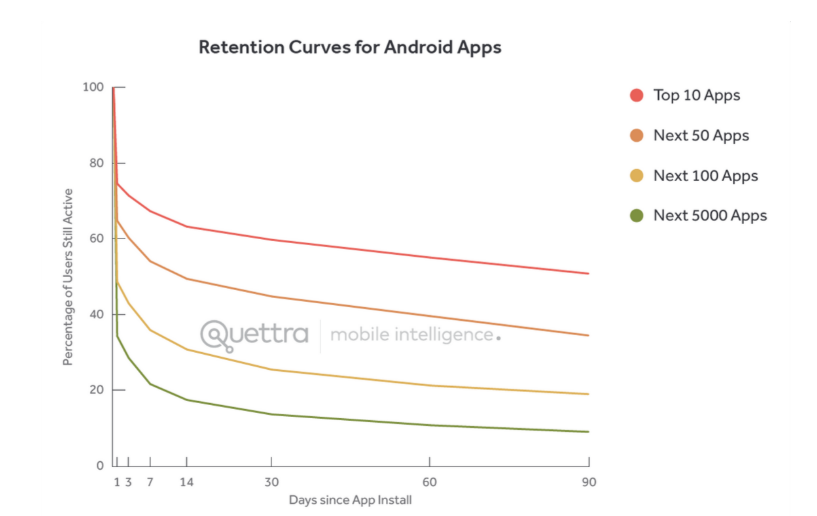
Here are detailed numbers for apps with varying performances.
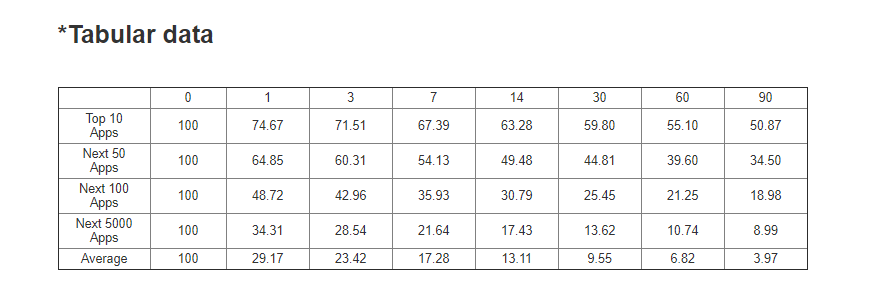
But Andrew Chen wisely mentioned the importance of the daily and monthly active users. They are key to determining whether your app retention rate is good or not. While the initial drop-off depends entirely on the quality of your app (UX, value, etc), as the time goes, some other factors play into the final result. To put it simply, retention rate also depends on the app category, and seemingly, the device.
According to Statista’s findings, iOS apps have a better retention rate across the varying categories. The most frequently and loyally used apps are card games, weather, finance, and health and fitness.
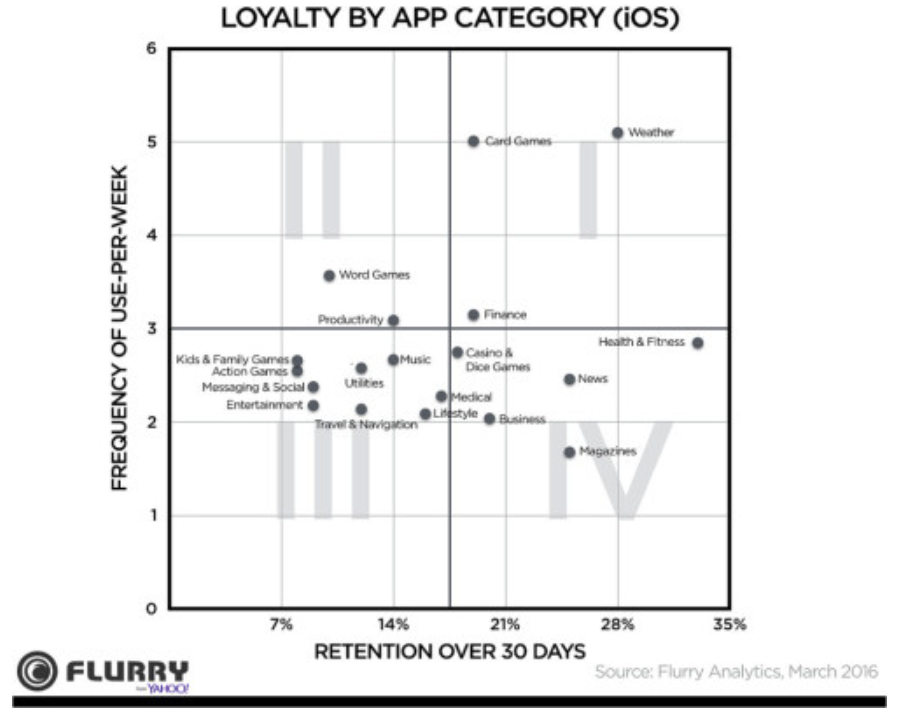
These are the results for Android apps, where only weather, mental health and fitness and news apps made iot above 25% monthly retention rate.
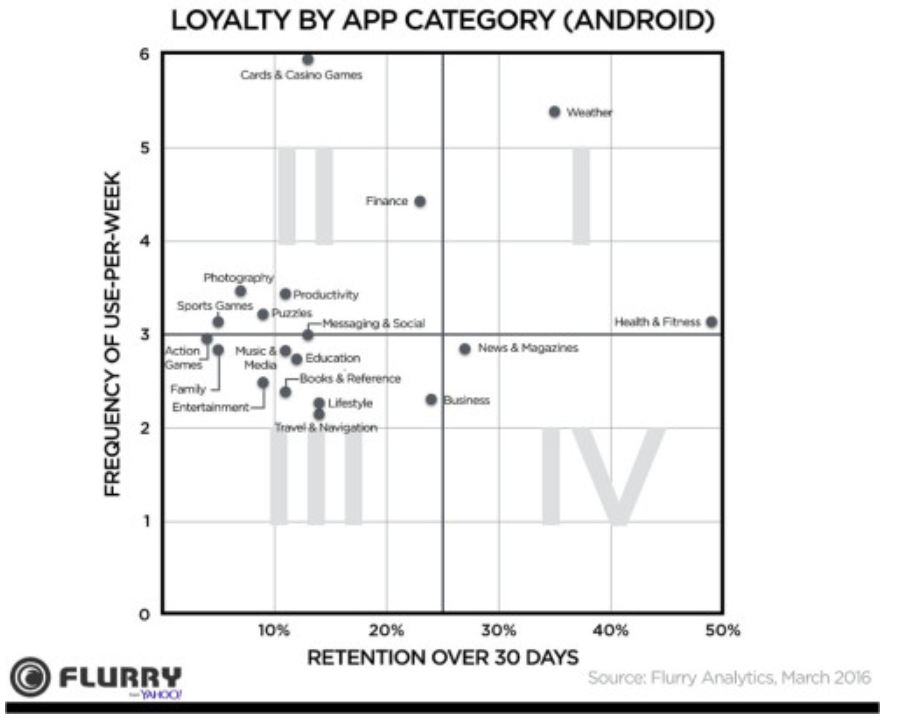
Software as a Service (SAAS)
Although the reports on retention rates are scarce, they are easier to come by if you are interested in mobile apps. However, SaaS seems to be a bit more mysterious category.
If you ask Google what’s a good retention rate, you’re likely to end up with bunch of articles written by various salesmen telling you that your business is going to burn in flames unless your retention rate is 90%.
Aiming for the skies is great but the reality check of a report based on anonymized data of 1.3 billion unique users says that fof the SaaS, an eight-week retention rate of 35% is considered elite. So before you start beating yourself up over this number, keep these realities in mind.
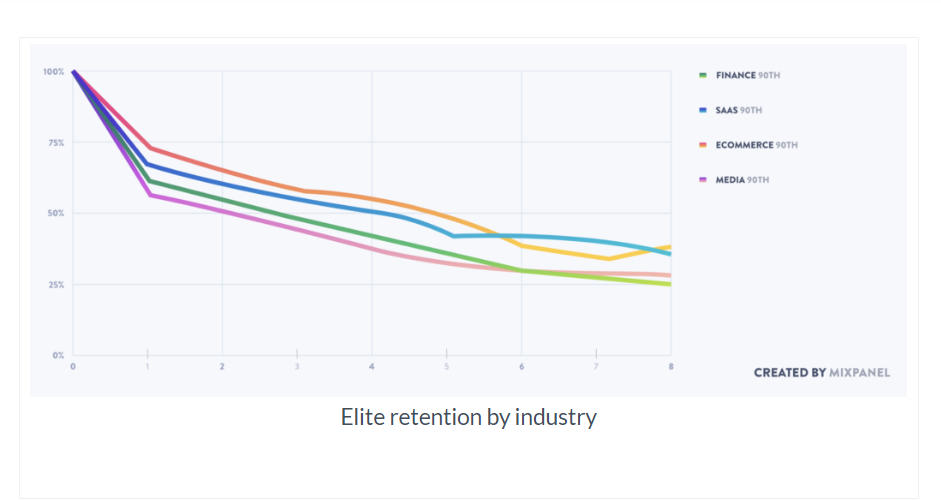
Ok, now that we figured out the numbers that could guide you, let’s talk about what your retention rate tells you – and whether it can lie.
What does determine my retention rate?
So, it’s a given, you want to have a high retention rate because it means that customers are sticking with your product, using it regularly and are willing to pay for it on a regular basis. But sometimes it can also be a source of false confidence.
Ideally, high retention rate should mean that the customers:
- Want to use your product over competitors’ products
- Are ready to use your product regularly
- Are ready to pay for your product
Retention rate, in a way, provides a source of guidance when you develop your product or services. But sometimes other factors are part of the customer’s decision process, so you need to look into the two following questions:
Is signing up easy?
Normally, you’d want to make this process as simple as possible, because it helps you convert leads to customers, right? And conversions are great. But sometimes, the ease of the conversion process can blur the actual reasons for your high retention rate or even affect it negatively.
This is the case with mobile apps – people notice a shiny (and for you, pricey) ad for your app, they click and install because it is easy, and they test your app knowing that they can uninstall it just as easily.
But let’s say you ask people to register and leave their credit card info. That will chisel away quite a few potential customers but it will leave you with those who a) really need your service b) are ready to go through the lengthy sign-up process to get it. Conversely, this is likely to leave you with customers who are going to be there next month as well.
Is canceling difficult?
Sometimes, high retention rate can also be a sign of customer feeling cornered into using your product because canceling or switching can be a lengthy or even expensive process.
“Think LMSs for schools, CRM, customer support tools, or other products that tightly integrate into your workflow and/or in which you accumulate data that is not easily transferable,” writes Lauri Lehtmaa from Creandum. “In such cases, complementary metrics such as net promoter score (NPS) can come in handy to get a clearer picture.”
In conclusion, you will get a clear picture from your retention rate only if you take a careful look at your customer acquisition cost and customer lifetime value.
Conclusion
While retention rate is a quantitative way to describe where your business currently stands, moving this number up requires a lot of qualitative data.
Whether you sell a mobile app or software, retention rate should direct your qualitative analysis of the way people interact with your product. This way, you will be able to make changes or add features that will keep you a loyal customer base. The best way to do that is also the simplest one – just ask people.
If you want to start a conversation with your potential and existing customers, quizzes and surveys are a perfect way to do it in a fun, engaging, and reliable way. In this article, you can learn more about the types of surveys you can use to gather customer feedback. If you want to learn how numbers measure against qualitative data, click here. And if you need a tool to put these surveys into action, just click below!
